Tomatoes are the backbone of so many dishes, from tangy marinara sauces to refreshing salads. But just like all fresh ingredients in our kitchens, tomatoes have their time in the spotlight, and then they start to fade. So, how can you tell if that once-juicy tomato is bad?
The most obvious sign is mold, but a tomato that’s on its way out might have wrinkled skin, dark spots, or even give off an odd smell.

And let’s be real, there’s nothing more frustrating than slicing into a tomato only to find it’s gone bad, especially when you’re making a BLT sandwich!
In this guide, I’ll walk you through the telltale signs that your tomatoes have seen better days. Plus, I’ll share some tips to help make sure that you’re always working with the freshest of the bunch.
How To Know If A Tomato Is Bad
Here’s a quick glance at the differences between a fresh tomato and a spoiled or rotten tomato.
What Does A Fresh Tomato Look Like:
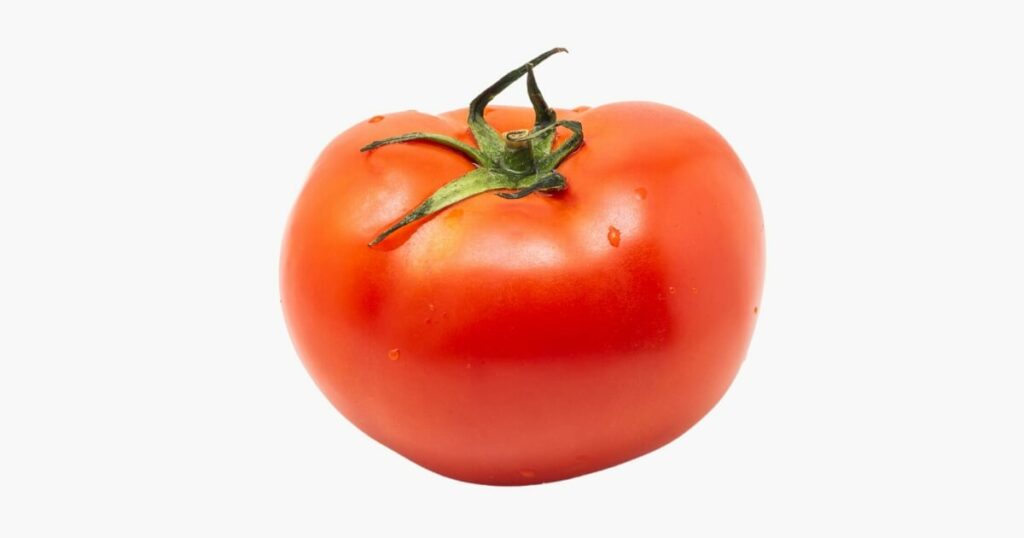
- Vibrant red hue, though shades can differ based on the type.
- Firm texture, yielding slightly when pressed.
- Smooth skin without noticeable blemishes.
- Subtle yet distinct earthy scent.
What Does A Bad Tomato Look Like:
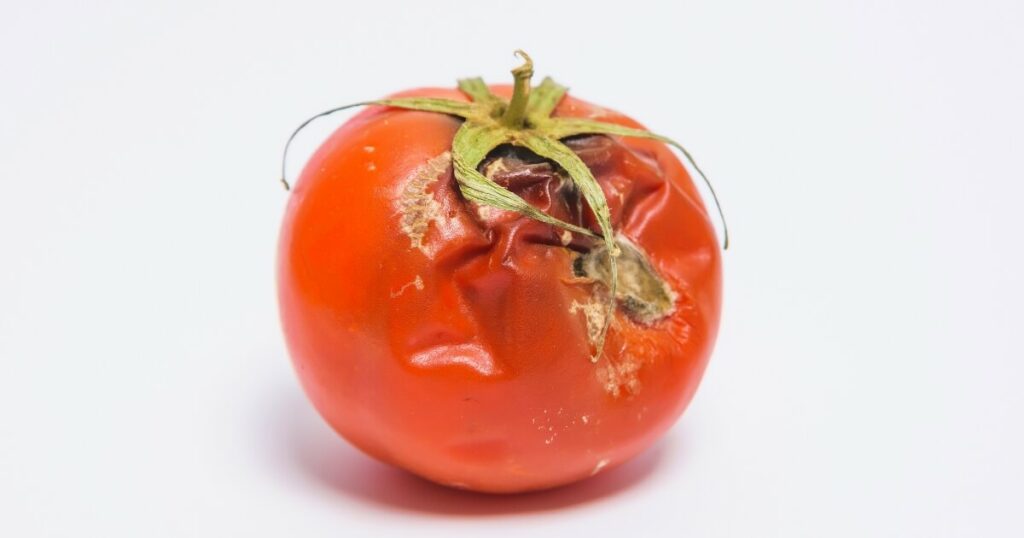
- Skin with sunken areas or dents.
- Overly soft or mushy spots.
- Dark spots or patches indicate rot.
- Off-putting, sour, or fermented smell.
For more insights on tomatoes and their shelf life, you might find it helpful to check out my other article on “how long tomatoes last.”
Soft Spots Or Mushy Texture
Tomatoes should generally have a firm texture, whether fresh, ripe, or of the cherry variety. However, when they become excessively soft and mushy, it’s often an indication that they may have gone off.
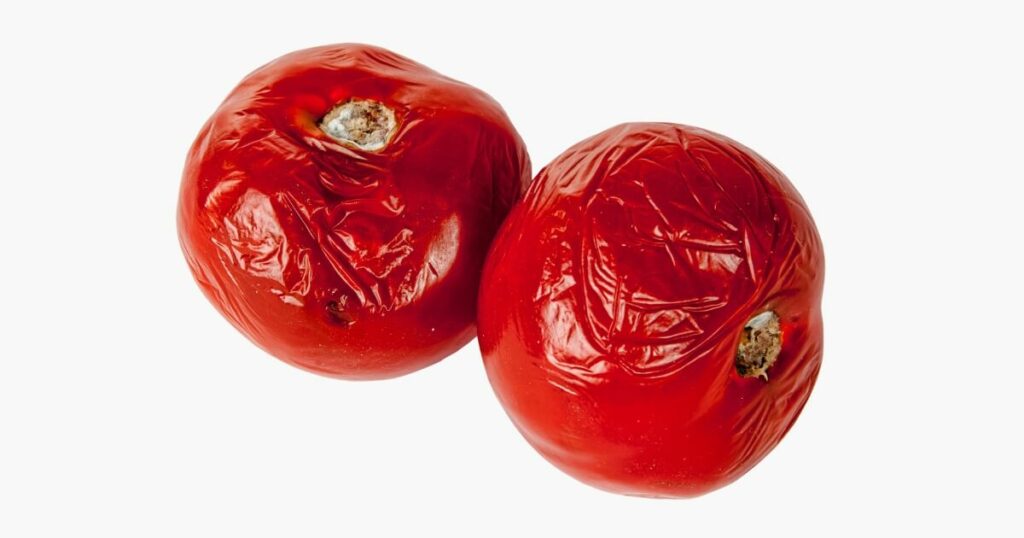
Overripe tomatoes naturally have a softer texture, but there’s a difference between a tomato that’s just ripe and one that’s starting to spoil.
I’ve often found that softer, overripe tomatoes still retain some firmness. But if a tomato feels like it’s melting in your hand or has a near-liquid consistency, it’s a clear sign of spoilage.
This excessive softness can be attributed to various factors, including overripening, decomposition, or even physical damage.
Dark or Black Spots
In their prime, Tomatoes should have a consistent color throughout, free from any unsightly blemishes. However, when dark or black spots start to appear, it’s a warning sign that the tomato might be compromised.
I’ve come across tomatoes with such spots in my kitchen, and while they might seem small and insignificant, they can indicate deeper issues with the fruit.
Green tomatoes, or unripe tomatoes, which are often used for certain recipes or fried dishes, should especially be monitored for brown or black patches. These discolorations can be signs of disease or the onset of spoilage.
Wrinkled Skin
A tomato’s outer layer is often a clear indicator of its internal condition.
When ripe, tomatoes should have smooth and taut skin, reflecting their juiciness inside. However, if you come across a tomato with wrinkled skin, it’s a hint that it might not be at its best.
Wrinkled skin on a tomato can be due to several reasons. It might be dehydrating, which means it’s losing its internal moisture. I’ve noticed this, especially with tomatoes left out for too long in dry conditions. They start to lose their plumpness, and the skin begins to shrivel.
Another reason could be that the tomato is aging or entering the early stages of spoilage. The taste and texture of such tomatoes can be off, making them less than ideal for eating or cooking.
Bursting or Leaking
Tomatoes, especially cherry tomatoes, are those delightful little bursts of flavor that can elevate any salad or dish. When fresh, they should be plump, whole, and free from any cracks or leaks.
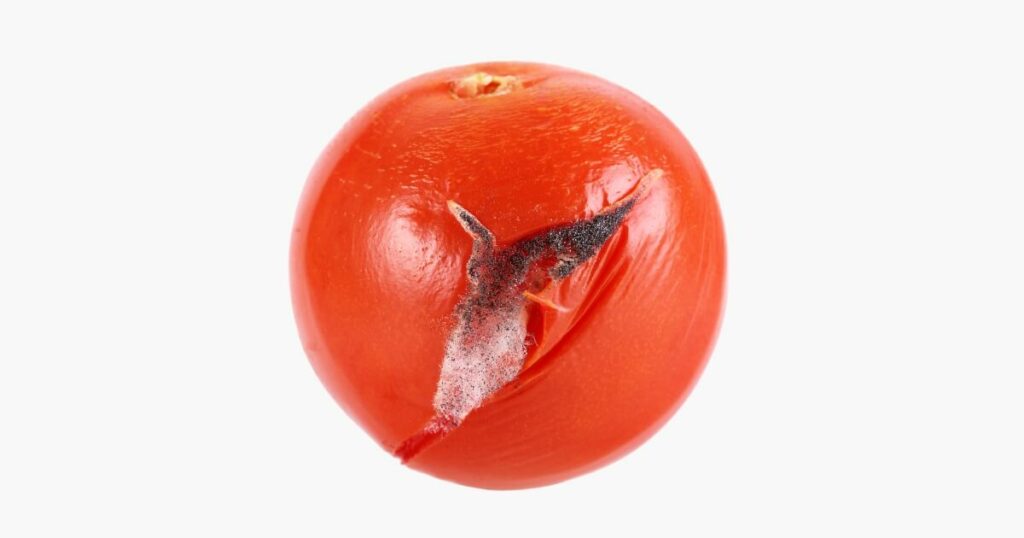
But if you find a tomato that’s burst open or is oozing juice, it’s a sign that something’s amiss. I’ve had a few occasions where I’ve eagerly reached for a handful of cherry tomatoes for a snack, only to find one or two that had split open.
A burst or leaking cherry tomato can be a result of it being overripe. Just like other fruits, when tomatoes ripen beyond their prime, their skin can’t contain the internal pressure, causing them to split.
Another reason for this could be physical damage or the onset of spoilage. Tomatoes are delicate, and rough handling can cause them to crack or leak.
Once they start leaking, they become more susceptible to bacteria and mold, speeding up decomposition and ripening process.
From my experience, it’s always a good idea to check tomatoes before adding them to a dish, ensuring they’re whole and fresh, guaranteeing the best flavor and texture.
Visible Mold
Mold spots on tomatoes are a clear no-go. When you spot those tiny white or green specks on the surface, it’s an unmistakable sign that the tomato is bad.
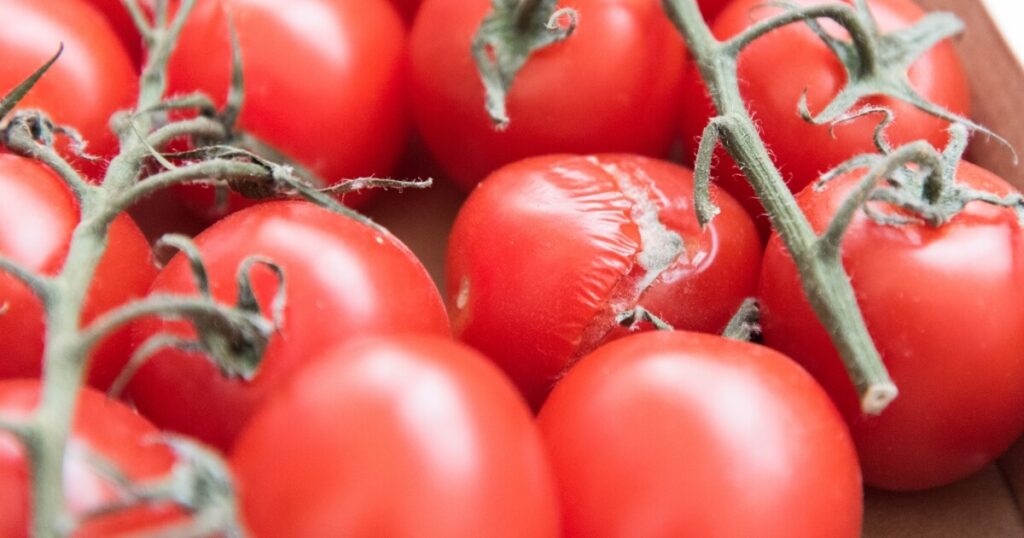
Mold spores thrive in moist conditions, and once they latch onto a tomato, they can spread quickly.
I remember once finding a tomato with just a tiny speck of mold and thinking it might be okay to cut off the affected part. However, when I sliced it open, I found the mold had penetrated deeper than I’d thought, making the entire tomato unusable.
Using a moldy tomato is not only unappetizing but can also pose health risks. Consuming mold can lead to stomach upset and other health issues.
Foul Smell
Regardless of their ripeness stage, Tomatoes should have a fresh and slightly earthy aroma.
When you pick up a tomato, and it gives off a sour or unusual smell, it’s a sign that it’s no longer good for consumption.
A fermented scent, or sour smell, is a clear red flag. It indicates that the tomato has started breaking down and might harbor harmful bacteria.
Using tomatoes with an off-putting odor can not only ruin the flavor of your dish but also pose health risks.
What Happens If You Eat A Bad Tomato?
Eating a spoiled tomato can lead to food poisoning and some unpleasant experiences. While many times it might just result in a bad taste in your mouth, there are instances where it can cause more serious issues.
The symptoms of consuming a bad tomato can vary. Common reactions include stomach upset, cramps, nausea, and sometimes vomiting or diarrhea.
If you suspect you’ve eaten a spoiled tomato, monitoring your symptoms is essential. Drinking plenty of water and resting can aid recovery. However, if symptoms persist or are severe, you should seek medical attention immediately.
From my own experiences and those of others, I’ve learned the importance of being cautious in the kitchen, ensuring that every ingredient we use is in its best condition. It’s a small step that can make a big difference in our overall well-being.
Bad Tomato FAQs
How to tell if sliced tomatoes are bad?
Sliced tomatoes should retain their vibrant color and fresh aroma. If they appear discolored, have an off-putting smell, or show any signs of mold, it’s best to discard them.
Are squishy tomatoes bad?
A slight softness can indicate a ripe tomato, but if it’s excessively squishy or feels mushy, it’s likely overripe or starting to spoil. Trust your senses. If it doesn’t feel or smell right, it’s better to avoid using it.
Can you eat wrinkled tomatoes?
Wrinkled tomatoes are often dehydrated or aging, which can affect their taste and texture. While they might be safe to eat, they won’t provide the best flavor or consistency in dishes.
Is it safe to cut mold off tomatoes?
It’s safer to discard moldy tomatoes entirely rather than trying to cut away the affected areas. Mold on tomatoes can penetrate deeper than the visible surface.
If one tomato is moldy, are the rest bad?
Not necessarily, but it’s crucial to inspect the other tomatoes closely. Mold can spread, so if others are in close contact with a moldy tomato, check them thoroughly for any signs of spoilage.











